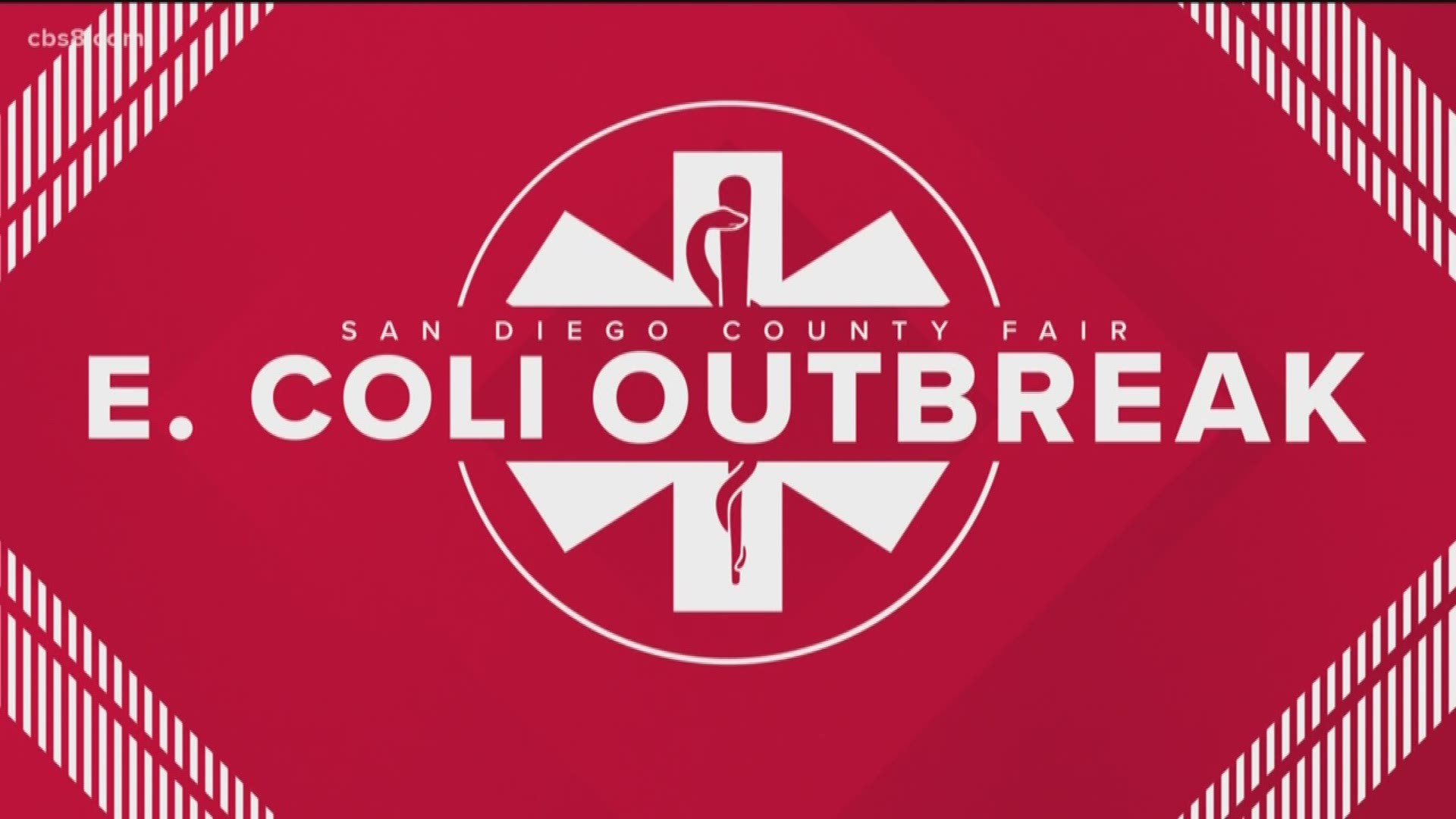SAN DIEGO — Two new probable cases of Shiga toxin-producing E. coli (STEC) that may be related to animals at the San Diego County Fair have been reported, the County of San Diego Health and Human Services Agency announced Friday.
That brings the total to four confirmed and three probable cases.
The two new probable cases are:
- A 2-year-old who visited the fair and reported contact with animals on June 22, became ill on June 26 and was not hospitalized.
- A 4-year-old who visited the fair and reported contact with animals on June 21, became ill on June 29 and is currently hospitalized.
“The investigation is ongoing, and even though the fair is over, there are likely more cases that will be reported,” said Dean Sidelinger, M.D., MSEd, interim deputy County public health officer. “This isn’t unusual for a public health investigation. We have asked local doctors to be on the lookout for symptoms of STEC.”
The first four cases—including the death of a 2-year-old boy—were reported by the Health and Human Services Agency last Friday, and County health officials recommended that the San Diego County Fair close all animal exhibits to the public at that time.
RELATED: Details emerge on investigation into E. coli outbreak possibly linked to San Diego County Fair
Most people recover from STEC without major complications; however, 5 to 10 percent of people diagnosed with the bacteria develop a life-threatening kidney infection.
Most people with a STEC infection start feeling sick three to four days after eating or drinking something that contains the bacteria. Symptoms vary from person to person and often include:
- Severe abdominal cramps
- Watery or bloody diarrhea (3 or more loose stools in a 24-hour period)
- Vomiting
Symptoms may occur with or without a fever. When present, the fever usually is not very high (less than 101˚F/38.5˚C). Most people get better within five to seven days. Some infections are very mild, but others are severe or even life-threatening.
The best way to prevent an STEC infection is to practice good handwashing hygiene. Always wash your hands thoroughly after contact with animals or their environments (at farms, petting zoos, fairs, even your own backyard). Everyone, especially young children, older individuals, and people with weakened immune systems, should wash their hands before eating or drinking.

